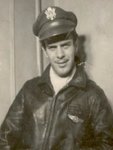pbfoot
1st Lieutenant
I believe with the the exception of the RCAF photo survey Lancs which flew til 64 the B24 remained in service til 61 with trhe Indian Af 2 years more then the B17 target drones. The B24 was also were used in clandestine ops and ECM missions
Last edited:

